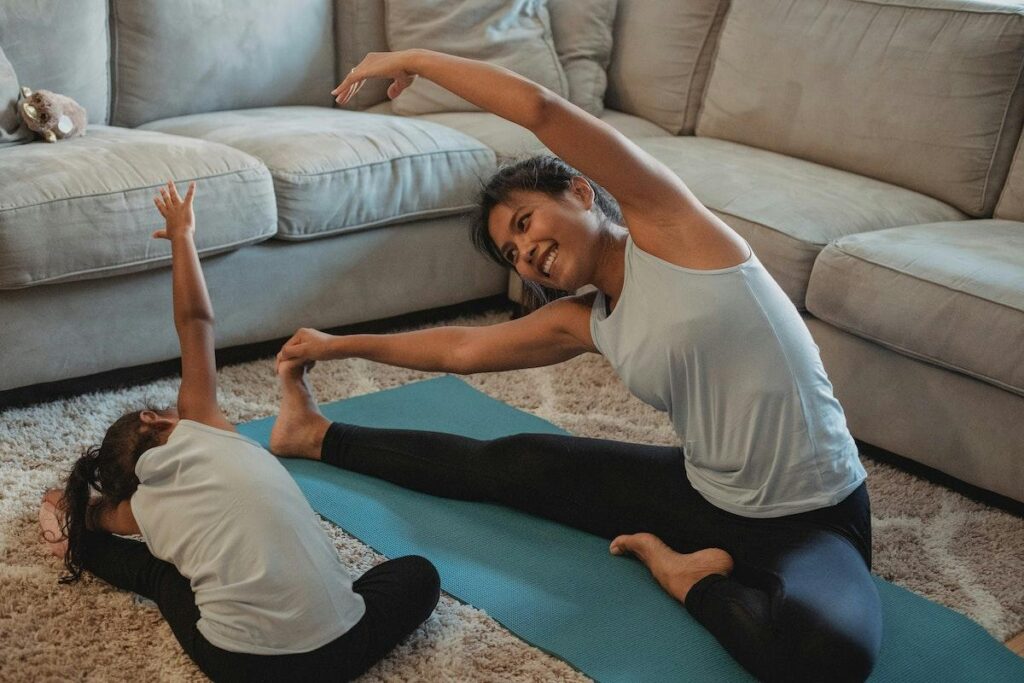
Introduction
Embarking on the pelvic floor physical therapy journey signifies a significant step toward addressing various pelvic health concerns. Whether navigating discomfort, postpartum recovery, or managing pelvic floor dysfunction, clearly understanding what to expect during these therapy sessions is crucial.
This guide aims to shed light on when pelvic floor therapy is needed, what to expect during the sessions, who performs the treatment, the duration, exercises, and techniques involved, and more.
When Do You Need Pelvic Floor Therapy?
Pelvic floor therapy is a specialized therapy that addresses a spectrum of conditions, aiming to enhance comfort and improve overall quality of life.
Pelvic floor therapy is recommended for individuals experiencing:
Chronic Pelvic Pain: Persistent pain in the pelvic region that impacts daily life.
Postpartum Issues: Concerns related to childbirth, such as muscle weakness or incontinence.
Pelvic Organ Prolapse: When organs like the bladder, uterus, or rectum descend into the vaginal space.
Urinary or Fecal Incontinence: Difficulty controlling bladder or bowel movements.
Painful Intercourse: Discomfort or pain during sexual activity.
What to Expect During Pelvic Floor Therapy

During pelvic floor therapy, anticipate a personalized approach involving assessments, open discussions about symptoms, potential internal examinations, and developing a tailored treatment plan encompassing exercises and techniques specific to your condition.
As we delve into the specifics of what happens during pelvic floor therapy, let’s begin with the initial assessment process.
Initial Assessment
- Obtaining Patient History: The therapist will examine your medical history, considering factors like surgeries, pregnancies, and relevant health conditions.
- Discussion of Symptoms and Concerns: An open dialogue about your symptoms, concerns, and goals for therapy helps the therapist understand your unique situation.
Physical Examination
- Internal Examination of the Pelvic Floor: In some cases, an internal examination may be conducted to assess the pelvic floor muscles’ tone, strength, and flexibility.
- Explanation of the Procedure: Your therapist will walk you through each step, ensuring you’re comfortable and informed about any internal examinations.
Treatment Plan Development
- Tailoring Therapy to Individual Needs: A personalized treatment plan is created based on the assessment, incorporating exercises and techniques specific to your condition.
- Setting Goals and Expectations: Clear goals are established, and expectations are discussed to ensure alignment between you and your therapist.
Who Performs Pelvic Floor Therapy?
Pelvic floor therapy is typically conducted by licensed physical therapists who have pursued additional training and specialization in pelvic health. These professionals possess the expertise to address a wide range of pelvic health issues.
To ensure the effectiveness of your therapy, it’s crucial to choose a therapist who is licensed and experienced in pelvic floor treatment. Look for credentials, such as certifications from reputable organizations like the American Physical Therapy Association, to guarantee that your therapist is well-equipped to guide you through your pelvic health journey.
Duration of Pelvic Floor Therapy
The duration of pelvic floor therapy varies depending on the severity of the condition, typically spanning several weeks to a few months. Exploring what does pelvic floor therapy look like, it’s important to note that multiple studies indicate training regimens aimed at strengthening pelvic floor muscles demonstrate effectiveness rates ranging from 29% to 59%. This underscores the dynamic nature of pelvic floor therapy, tailored to individual needs and exhibiting a range of positive outcomes based on structured training approaches.
Pelvic Floor Therapy Exercises and Treatment Techniques

Your therapist will guide you through exercises designed to strengthen or relax specific muscles. Exercises targeting the pelvic floor muscles in a therapeutic context have the potential to alleviate symptoms associated with pelvic floor dysfunction, including issues like urine leakage.
Techniques may include:
Guided Exercises
Your therapist will lead you through exercises tailored to strengthen or relax specific pelvic floor muscles.
Kegel Exercises: Contract and lift the pelvic floor muscles as if you are trying to stop the flow of urine. Hold for a few seconds, and then release. Repeat this contraction-relaxation cycle.
Pelvic Clocks: Imagine your pelvic area as the face of a clock. Gently tilt your pelvis forward, backward, and side to side, moving through each hour on the clock. This helps engage different muscles.
Bridge Exercise: Lie on your back with your knees bent and feet flat on the floor. Lift your hips towards the ceiling, engaging the glutes and pelvic floor muscles. Hold for a few seconds and then lower back down.
Squats: Stand with feet shoulder-width apart and slowly lower your body into a squat position. Focus on engaging the pelvic floor muscles as you rise back up.
Inner Thigh Squeeze: Place a soft ball or pillow between your knees and gently squeeze, engaging the inner thigh and pelvic floor muscles. Hold for a few seconds and release.
Diaphragmatic Breathing: Practice deep, diaphragmatic breathing to promote relaxation and coordination of the pelvic floor muscles. Inhale deeply through your nose, allowing your diaphragm to expand, and then exhale slowly.
Biofeedback
Utilization of biofeedback techniques to enhance your awareness and control of pelvic muscles, aiding in the optimization of exercise effectiveness.
Studies indicate the effectiveness of pelvic floor muscle (PFM) exercises or biofeedback in treating urinary stress incontinence (USI).
Manual Therapy
Hands-on techniques performed by the therapist to address muscle tension, release trigger points, and improve overall pelvic floor function.
Lifestyle Modifications
Recommendations and guidance on adjustments to your daily activities, posture, and habits to complement the therapeutic exercises and promote pelvic health.
Summary
Pelvic floor physical therapy, such as the expert services provided by Wildhawk Physical Therapy, embodies a personalized and holistic approach to tackling pelvic health issues. Through a comprehensive initial assessment and creating a customized treatment plan, individuals can attain enhanced pelvic health and overall well-being under the guidance of qualified therapists.
FAQs
Q1: How to find a good pelvic floor physical therapist?
A1: When seeking a pelvic floor physical therapist, consider the professionals at Wildhawk Physical Therapy. Take important steps such as seeking referrals from healthcare providers, checking qualifications, reading reviews, and ensuring the therapist has specific training in pelvic floor therapy. These measures contribute to a well-informed decision and a positive therapeutic experience.
Q2: Is pelvic floor therapy painful?
A2: It’s important to note that while some discomfort may be experienced during assessments, the overarching design of pelvic floor therapy is rooted in a gradual and personalized approach tailored to your comfort level.
Therapists are attentive to individual sensitivities and work collaboratively with clients to ensure the therapy journey is as comfortable and accommodating as possible.
Q3: How long does a typical pelvic floor therapy session last?
A3: Sessions typically last 45 minutes to an hour, but the duration may vary based on individual needs.
By understanding what to expect at pelvic floor physical therapy, individuals can confidently approach the process, actively participating in their journey toward pelvic health and overall wellness.








